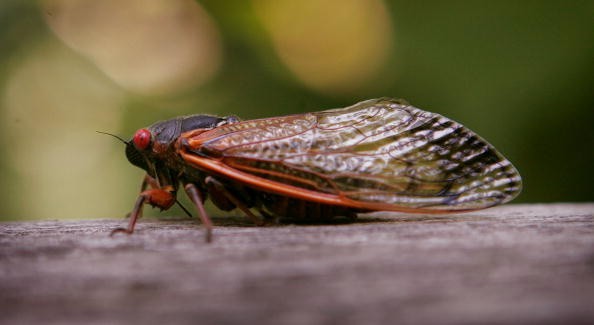The cicadas of Brood X will come out in great numbers from Indiana to Georgia to New York within days to not more than a couple of weeks.

The Cicadas of Brood X
Michael Raupp and Paula Shrewsbury while sifting through a shovel heap of dirt in a suburban backyard, discover their quarry: a cicada nymph. And then they kept finding another and another. And four more!
In possibly a third of a square foot of dirt, entomologists at the University of Maryland find not less than seven cicadas - an amount just shy of a million an acre.
A close-by yard produced an amount close to 1.5 million. And there are many more afoot. Experts say trillions of the red-eyed black bugs are on their way, The cicadas of Brood X ( X - the Roman numeral for 10) will come out after 17 years underground within days, not more than a couple of weeks.
There are several broods of seasonal cicadas that emerge on rigid times in distinct years, but this is one of the greatest and most remarkable. They'll be coming out in 15 states from Indiana to Georgia to New York; they're emerging now in great numbers in North Carolina and Tennessee.
Also Read : Scientists Looking for 'Crooked' Cicadas
Vulnerable Stage of Brood X
When the whole brood comes out, backyards can resemble undulating waves, and the bug chorus is lawnmower loud. The cicadas will emerge mostly at dusk to try to keep away from everything that wants to consume them, squiggling out of their ground holes. They'll try climbing up trees or anything that is vertical, both Shrewsbury and Raupp.
Once they are out of the ground, they shed their skins and try surviving that unsafe stage before they turn into dinner to a host of critters both dogs, birds, Raupp, ants, and cats.
It's one of the most strange events of nature, involving a race against death, evolution, sex, and what can sound like an awful science fiction movie soundtrack. Some individuals may be repulsed.

Nature is Still Right
Shrewsbury says psychiatrists are calling the attention of entomologists panicking about their patients. But scientists say Brood X's arrival is a sign that in spite of pollution, dramatic biodiversity loss, and the climate crisis, something about nature is still right. And it's quite a show.
Entomologist John Cooley of the University of Connecticut said United state is the only place in the world that own periodic cicadas that remain underground for either 13 or 17 years. The bugs only come out in great numbers when the temperature of the ground gets to 64 degrees.
That's taking place earlier in the calendar in recent years due to climate change, says entomologist Gene Kritsky. Prior to 1950, they used to come out at the end of May; now they're emerging weeks earlier.
Related Article : Warning: Trillions of 'Brood X' Cicadas to Invade 15 US States, Including New York
For more news, updates about cicadas and similar topics don't forget to follow Nature World News!
© 2025 NatureWorldNews.com All rights reserved. Do not reproduce without permission.





